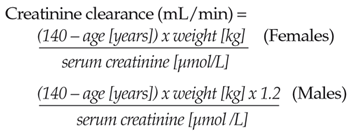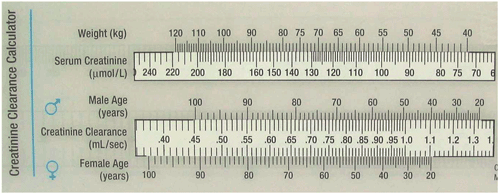Dear Editor,
I am grateful for your summary of ALLHAT (Feb. 2003, pp. 14-20) and the rest of this issue, which is invaluable for a mainly geriatric practice like my own. ALLHAT gave diuretics the edge, but I am not sure what these results mean to Canadian physicians.
The diuretic used was chlorthalidone, which is seldom prescribed in Canada. Other medications included the fossil reserpine and the rarely prescribed clonidine, hydralazine and doxazosin. Essentially, the choice of first drug prescribed for hypertension becomes irrelevant in moderate to severe cases. These patients require a combination of two to five classes of drugs for success, a juggling game that leaves a lot of collateral damage in the form of very predictable adverse drug reactions.
Diuretics remain justly popular and belong in most combinations, even in diabetics. Beta-blockers, being mostly generic, are virtual orphans these days, yet they are invaluable with comorbid arrhythmias and coronary heart disease. Calcium channel blockers and angiotensin II inhibitors have suffered a beating at the hands of the HOPE trial, which gave ACE inhibitors the edge. However, the very common and intractable ACE cough guarantees a place for the other classes.
Dr. D. Rapoport
Family Physician, Downsview, ON.
Creatinine Clearance Slide Ruler Calculator: Practical Tool for GPs
Dear Editor,
When evaluating elderly patients for secondary causes of hypertension, Drs. Feng and Campbell recommended that certain laboratory examinations be performed (Feb. 2003, pp. 31-33). Among these tests were a serum creatinine and urinalysis to exclude underlying renal parenchyma disease or renal artery stenosis. However, serum creatinine determination in the elderly is a poor reflection of creatinine clearance, as elderly patients frequently have low muscle mass. Normal serum creatinine values are seen in elderly patients who may have significant renal impairment. It is imperative that age, weight and sex of the patient be considered along with the actual serum creatinine measurements in order to adequately assess renal function. The Cockcroft-Gault formula can predict the creatinine clearance when these parameters are known.

GPs are unlikely to calculate creatinine clearance using the Cockcroft-Gault formula and are equally unlikely to obtain 24-hour urine samples in the elderly to determine creatinine clearance. We have developed a practical solution to the creatinine clearance calculation by creating a creatinine clearance slide rule calculator, based upon the Cockcroft-Gault formula. The ruler has five different logarithmic scales. The scale for weight and sex are fixed, whereas the scales for serum creatinine and creatinine clearance are placed on a movable insert. By aligning the serum creatinine against the weight of the patient, and then looking down at the patient's age and sex, one can obtain the appropriate creatinine clearance values (Figure).

The formula takes into consideration not only the patient's serum creatinine, but also their age, weight and sex. For instance, a serum creatinine of 130 mmol/L in a 70 kg, 75 year-old male would yield a creatinine clearance of approximately 0.7mL/sec, whereas a female of similar age and weight would have a creatinine clearance of 0.58mL/sec. The latter value approaches the critical point of avoiding many drugs in patients with compromised renal function (defined as < 30 mL/min, or 0.5mL/sec).
The slide ruler was developed by members of the Second Canadian Consensus Conference on the Use of NSAIDs. Its production and distribution have been made possible by Merck Frosst Canada. For further information concerning the creatinine clearance ruler and how to obtain a copy, please contact Foresee Technology Inc., at ForeseeInc@aol.com.
Sources
- Cockcroft DW, Gault MH. Prediction of creatinine clearance from serum creatinine. Nephron 1976;16:31-41.
- Tannenbaum H, Peloso PMJ, Russell, AS, et al: An evidence-based approach to prescribing NSAIDs in the treatment of osteoarthritis and rheumatoid arthritis: The Second Canadian Consensus Conference. Can J Clin Pharmacol Autumn 2000;7;4A-13A.
Dr. Hyman Tannenbaum
Rheumatic Disease Centre of Montreal,
McGill University, Montreal, QC.
Dr. Norm R.C. Campbell, co-author of the article "Screening for Secondary Causes of Hypertension in the Elderly", offered the following response to Dr. Tannenbaum:
Renal Impairment in Elderly Hypertensive Patients
We agree with Dr. Tannenbaum that renal impairment is frequently overlooked in the elderly when assessed with serum creatinine and that asking family physicians to routinely request 24-hour urine collections is unlikely to be implemented.
Even if implemented, such advice may not be effective due to incomplete urine collection, and even if effective, it may not be cost-effective. The use of a validated formula such as the Cockcroft-Gault has had limited uptake by family physicians, likely due to the complexity of the formula, the lack of systematic computerised support and the breadth of knowledge required to practice family medicine. Educational programs to increase awareness of the decline in renal function with age and simple tools to detect renal impairment may be useful in avoiding adverse drug reactions associated with prescribing drugs that are cleared by the kidneys and have a low therapeutic threshold.
The Canadian Hypertension Education Program (CHEP), a group of close to 40 Canadian hypertension specialists, systematically reviews and grades evidence in the area of hypertension every year. CHEP has recommended a history and physical examination and assessment of serum creatinine and a urinalysis to assess for renal target organ damage and renal hypertension in uncomplicated hypertensive patients. Antihypertensive treatment based on CHEP recommendations will reduce complications, especially in the elderly and in those who have other risk factors, such as renal impairment. Further, if advice to start at lower doses and titrate to response is followed when treating the elderly, adverse events related to renal accumulation of antihypertensive therapy are unlikely in those whose serum creatinine is in the "normal range". For those patients with resistant hypertension or additional features of renal hypertension, the CHEP program recommends additional renal investigations as outlined in our article.
I would encourage family physicians to take heed of Dr. Tannenbaum's advice regarding renal impairment and serum creatinine in the elderly, especially when prescribing drugs that reduce renal function (e.g., NSAIDs) and those with low therapeutic thresholds that rely on renal clearance (e.g., methotrexate).
Norm Campbell, MD, FRCPC
University of Calgary, Calgary, AB.


